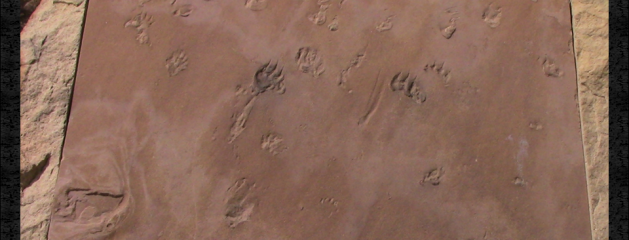“You are looking at parts of petrified flour sacks from the Blue Spring mill.’ Although not suitable to eat, these sacks of petrified flour give lots of ‘food for thought”. “It is commonly believed that petrification is a process taking millions of years … not true! Under ideal conditions petrification can take place in as few as three weeks.” Read more here: https://creation.com/petrified-flour
Read MoreC-14 All Throughout the Geologic Column!!
C-14 has been found all throughout the geologic column!! To follow-up from Yesterday’s post, since C-14 shouldn’t last more than 100,000 years, evolutionists find it pointless to C-14 date items thought to be millions of years old. And to be fair, it would be pointless if their assumptions were true, but the evidence points to the fact that these items are not millions of years old. There are many examples of research that reports that C-14 has been found in: -“70 samples...
Read MoreNo Transitions for New Creatures!
The experts say there are no transitions for new creatures! “The history of most fossil species includes two features particularly inconsistent with gradualism: 1). Stasis. Most species exhibit no directional change during their tenure on earth. They appear in the fossil record looking much the same as when they disappear;…” “… Morphological change is usually limited and directionless. 2). Sudden Appearance. In any local area, a species does not arise gradually by...
Read MoreTracks up to the fossils!

“Animal tracks almost always precede body fossils in the fossil record, as paleontologist Dr Marcus Ross explains (see Reading evolution into the Scriptures and Is Genesis History?): “This is a pattern we see in several different groups, where their footprints are first, and their body parts are later. For the trilobites, for the amphibians, for the dinosaurs—the first time I find evidence of them in the fossil record, it’s from trackways, not from hard parts. From...
Read MoreHow do you date archaeological sites?
How do you date archaeological sites? Are the secular models of the stone age, bronze age, iron age, (etc.) accurate? “1. Fossil dating. This is largely irrelevant in this context as it is used for much greater periods of time. However, it is used to some extent in the Lower Paleolithic strata as here defined. Fossil dating assumes that the fossil can be dated by the rock in which it is found, and dating of the rock in which it is found assumes that it can be dated...
Read MoreWrongly Defined as Evolution!
Ceratopsian (horned) dinosaurs appear to develop their horns as a sign of maturity. Some young specimens may have been wrongly classified as evolutionary links. Check this out: “Liaosaurus has features that spoil the idea of a smooth evolutionary progression. Rather, some structural similarities between different ceratopsians are now regarded as homoplasies, i.e. independently arisen and not the result of evolution from a common ancestor. This is consistent with...
Read More“Where are all the bodies???”
Can you imagine stumbling across 4 billion skeletons? – “Where are all the bodies???” “Evolutionists also claim there was a ‘Stone Age’ of about 100,000 years11 when between one million and 10 million people lived on Earth. Fossil evidence shows that people buried their dead, often with artefacts—cremation was not practised until relatively recent times (in evolutionary thinking). If there were just one million people alive during that time, with an average...
Read MoreNot Rotten or Stone!
“Over 50 scientific, peer-reviewed journal articles describe 14 bio-organic materials in dinosaur bones that simply should not exist if the dinosaurs died out 65 million years ago. Many of these, like collagen, have studied decay rates that establish maximum shelf-lives of between 10,000 and 100,000 (some studies) and 300,000 to 900,000 years (other studies). Both are far, far shorter than 65 million years. Because the “expiration date” for these 14 bio-organic...
Read More“None” – Did they really say that?!
Researcher Mary Schweitzer discovered original soft-tissue in Dinosaur bone that had not rotted away or turned to stone. She chronicled her struggle to share this data with others here: “I had one reviewer tell me that he didn’t care what the data said, he knew what I was finding wasn’t possible. I wrote back and said, “Well, what data would convince you?” And he said, “None.”” Source: Barry Yeoman, “Schweitzer’s Dangerous Discovery” Discover Magazine: April 2006, p....
Read More“How could blood cells survive that long?”
“When Schweitzer first found what appeared to be blood cells in a T. Rex specimen, she said, “It was exactly like looking at a slice of modern bone. But, of course, I couldn’t believe it. I said to the lab technician: “The bones, after all, are 65 million years old. How could blood cells survive that long?’”” Maybe she is asking the wrong question…maybe we should ask: “Are we sure that it is millions of years old?” Picture and Quote Source: Dr. Carl Wieland, Still...
Read MoreFossils in a day – in the lab!
Check out the following quote from a secular source. It talks about trying to speed up the process of millions of years, but it looks like it is simply a quick process to create fossils – including quick compression under sediment – which looks identical to what we expect happened during the global flood! “One of the biggest ingredients in the creation of a fossil is time. Lots and lots and lots of time – thousands to millions of years. So studying the process...
Read MoreGrass found in…Dino poop!
This is another example of how the evolutionary timeline has had to shift. Grass has been thought to have evolved around 55 million years ago, but grass found in fossil dino poop shows that it must have been around at least 10 million years sooner. This is also another example of modern plants and animals living alongside of dinosaurs. Same fossils as are living today – no evidence of evolution! Source:...
Read More
